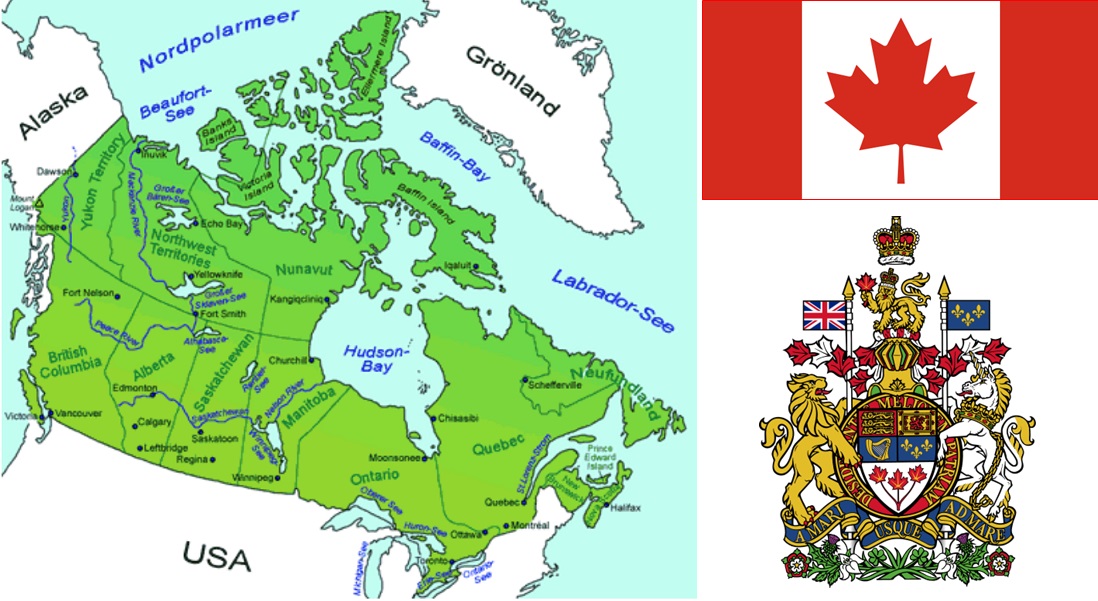Canada
The state of Canada in North America, with the federal capital Ottawa, covers 9,984,670 km², making it the second largest country in the world. It lies between the Atlantic Ocean in the east and the Pacific Ocean in the west and extends northwards to the Arctic Ocean. Canada borders the USA to the south and north-west, the French overseas territory of Saint-Pierre and Miquelon to the east and Greenland with the border created in 2022 via Hans Island. Formally, Canada is a constitutional monarchy within the Commonwealth of Nations (largely former territories of the British Empire) with the British monarch as head of state, who is represented by the Cabinet (Committee of the Canadian Crown Council).

History
In 1811, the German officer Johann (John) Schiller planted eight hectares of vines near Toronto on the Credit River, which is considered the birth of Canadian viticulture. He experimented with wild vines of the American species Vitis labrusca found there. In 1866, in the southern tip of the country on Pelee Island in Lake Erie, winegrowers from Kentucky planted vineyards with the Isabella variety. By the end of the 19th century, there were already around 50 wineries, most of them in the province of Ontario. From the 1930s onwards, many French and American hybrids were planted, with particular emphasis being placed on the frost resistance of the vines.
One of the main protagonists was the viticultural pioneer Adhémar de Chaunac (*1896), who founded Eisweinicewineproduction. The climate is extreme, with very cold winters averaging minus 5 °C and hot summers, but on the Niagara Peninsula to the south it is ideal for viticulture thanks to the moderating influence of the huge Lakes Ontario and Erie.

Viticulture in modern times
Prohibition, which was introduced in 1916 and remained in force until 1927, led to a major upturn in viticulture in Canada (in contrast to the USA). Thanks to skilful lobbying by wine producers, wine was exempt from the ban on alcohol. At this time, the "Liquor Board System" was created, which is still in force today, in which the sale of alcoholic beverages is carried out by state-run shops (private shops are now also permitted). Until the 1970s, it was mainly sweet, high-alcohol dessert wines made from local Labrusca varieties that were still labelled as sherry or port at the time, which has since been banned.
It was not until 1975 that the first licence since Prohibition was granted to a privately run winery, the Inniskillin (Ontario) winery on the Niagara Peninsula near the Falls. One of the founders was the Austrian-born pioneer Karl Kaiser (1941-2017), who initiated the production of icewine, which is favoured by the climatic conditions. Today, Canada is the world's largest producer of icewines. This also marked the beginning of the increased cultivation of European Vitis vinifera varieties. However, hybrids still make up a relatively large...
Voices of our members

For me, Lexicon from wein.plus is the most comprehensive and best source of information about wine currently available.
Egon Mark
Diplom-Sommelier, Weinakademiker und Weinberater, Volders (Österreich)